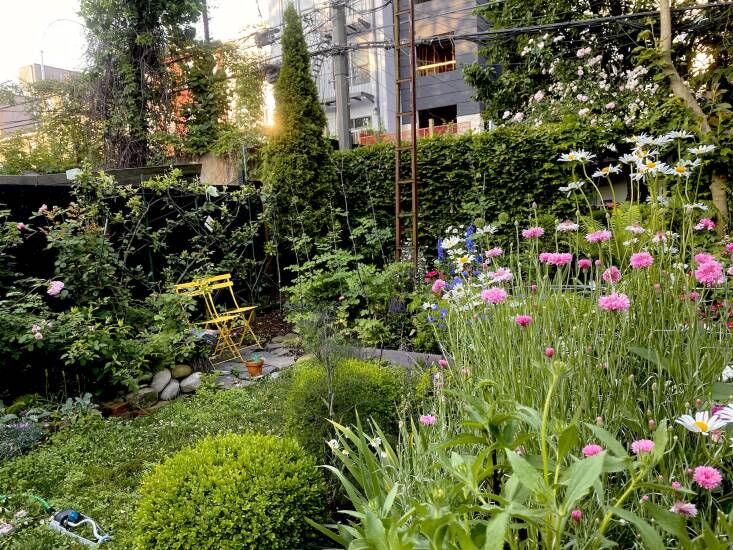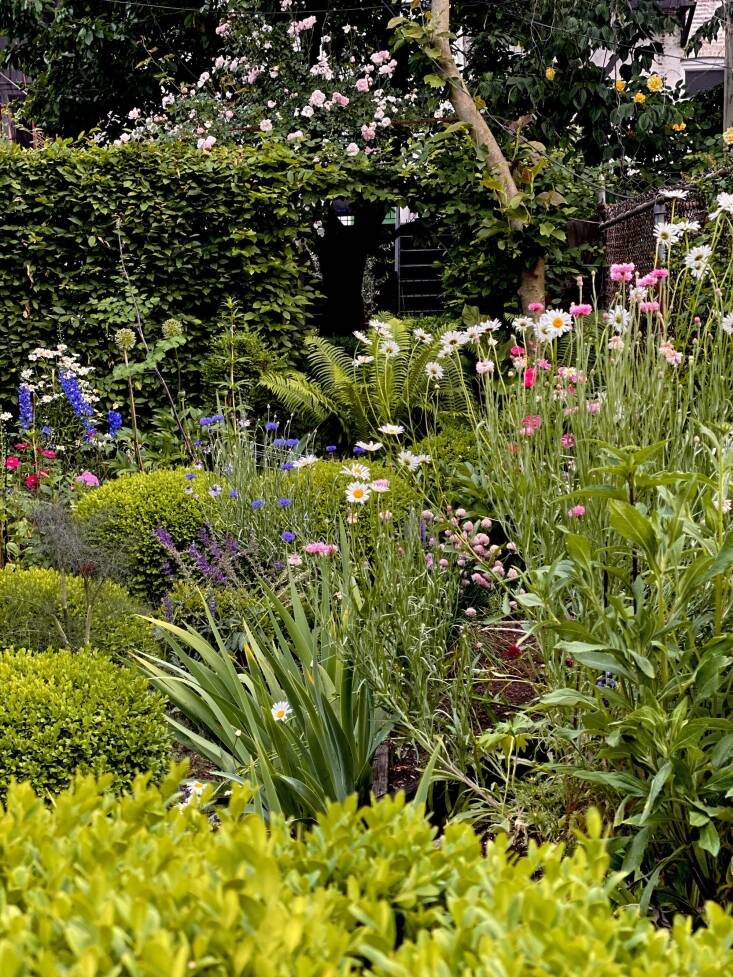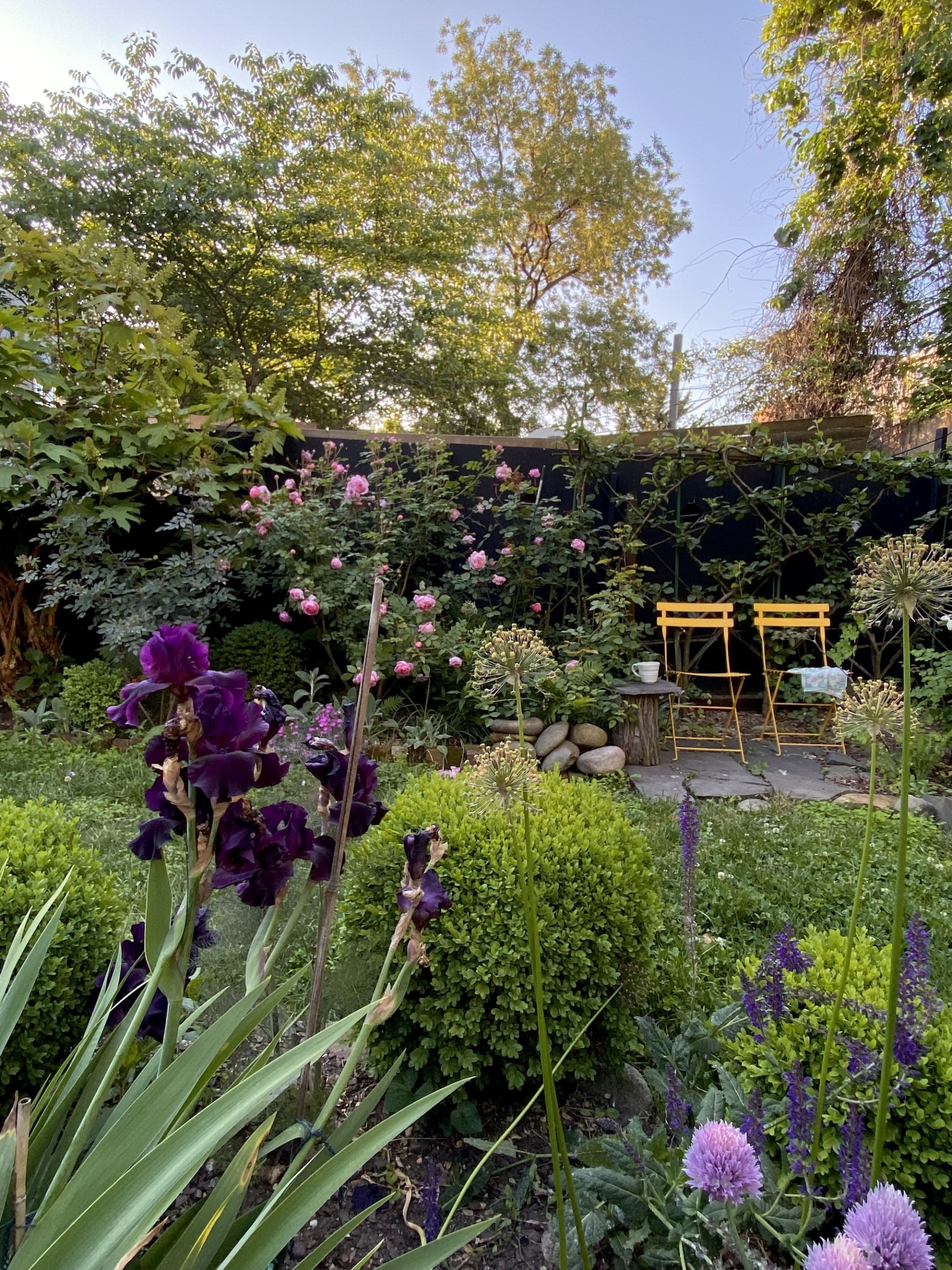“I always wanted a garden,” says ceramist Melissa Goldstein of MG by Hand. (Read more about her work here.) As a child she loved going on nature walks with her dad. Years later, she rallied the fellow tenants in her old Tribeca loft to create a communal garden on their rooftop. But until 2007 she never had a garden of her own. When a friend told her that the brownstone behind hers in Brooklyn was coming up for sale, the artist and photography consultant jumped at the chance.
There was one problem, though. The previous owner, who was too old to manage the backyard, had been getting it sprayed with pesticides to control the vegetation. “We moved in and inherited a poisoned yard,” says Goldstein. But she didn’t let that deter her. She had the soil tested at Cornell’s Cooperative Exchange and set out to repair the land. “I planted crimson clover, which adds nitrogen to the soil, and brought in carful after carful of compost that New York City was giving away at the time in Staten Island,” she recalls of some of her methods. The soil slowly began to heal. And after a few years she began planting.
Photography by Melissa Goldstein.

She started with structure. She bought a “really beautiful boxwood” at a local nursery and began propagating cuttings by dipping them in root hormone and planting them in the ground. “I ended up with a lot of them,” she said. “They grew pretty quickly.” The boxwoods, sculpted into loose balls, dot the yard, providing moments of green among a sea of blooms.
She also removed the chain-link fence that separated her yard from her friend-now-neighbor’s and replaced it with a living fence. She ordered seven European hornbeam (Carpinus betulus) plants from Digging Dog Nursery. She knitted them together along the 20-foot-wide property border and trained an archway so that the two families could walk through on visits. The children, especially, loved running back and forth between the two yards.



